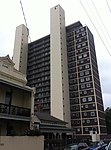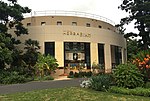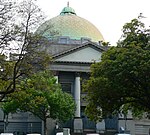Royal Botanic Gardens Victoria

Royal Botanic Gardens Victoria are botanic gardens across two sites–Melbourne and Cranbourne.Melbourne Gardens was founded in 1846 when land was reserved on the south side of the Yarra River for a new botanic garden. It extends across 38 hectares (94 acres) that slope to the river with trees, garden beds, lakes and lawns. It displays almost 50,000 individual plants representing 8,500 different species. These are displayed in 30 living plant collections. Cranbourne Gardens was established in 1970 when land was acquired by the Gardens on Melbourne's south-eastern urban fringe for the purpose of establishing a garden dedicated to Australian plants. A generally wild site that is significant for biodiversity conservation, it opened to the public in 1989. On the 363 hectares (897 acres) site, visitors can explore native bushland, heathlands, wetlands and woodlands. One of the features of Cranbourne is the Australian Garden, which celebrates Australian landscapes and flora through the display of approximately 170,000 plants from 1,700 plant varieties. It was completed in 2012.Royal Botanic Gardens Victoria is home to the State Botanical Collection, which is housed in the National Herbarium of Victoria. The collection, which includes 1.5 million preserved plants, algae and fungi, represents the largest herbarium collection in Australia and wider Oceania. It also includes Australia's most comprehensive botanical library.
Excerpt from the Wikipedia article Royal Botanic Gardens Victoria (License: CC BY-SA 3.0, Authors, Images).Royal Botanic Gardens Victoria
Birdwood Avenue, Melbourne Melbourne
Geographical coordinates (GPS) Address Nearby Places Show on map
Geographical coordinates (GPS)
| Latitude | Longitude |
|---|---|
| N -37.8334 ° | E 144.98033 ° |
Address
Birdwood Avenue
Birdwood Avenue
3004 Melbourne, Melbourne
Victoria, Australia
Open on Google Maps









